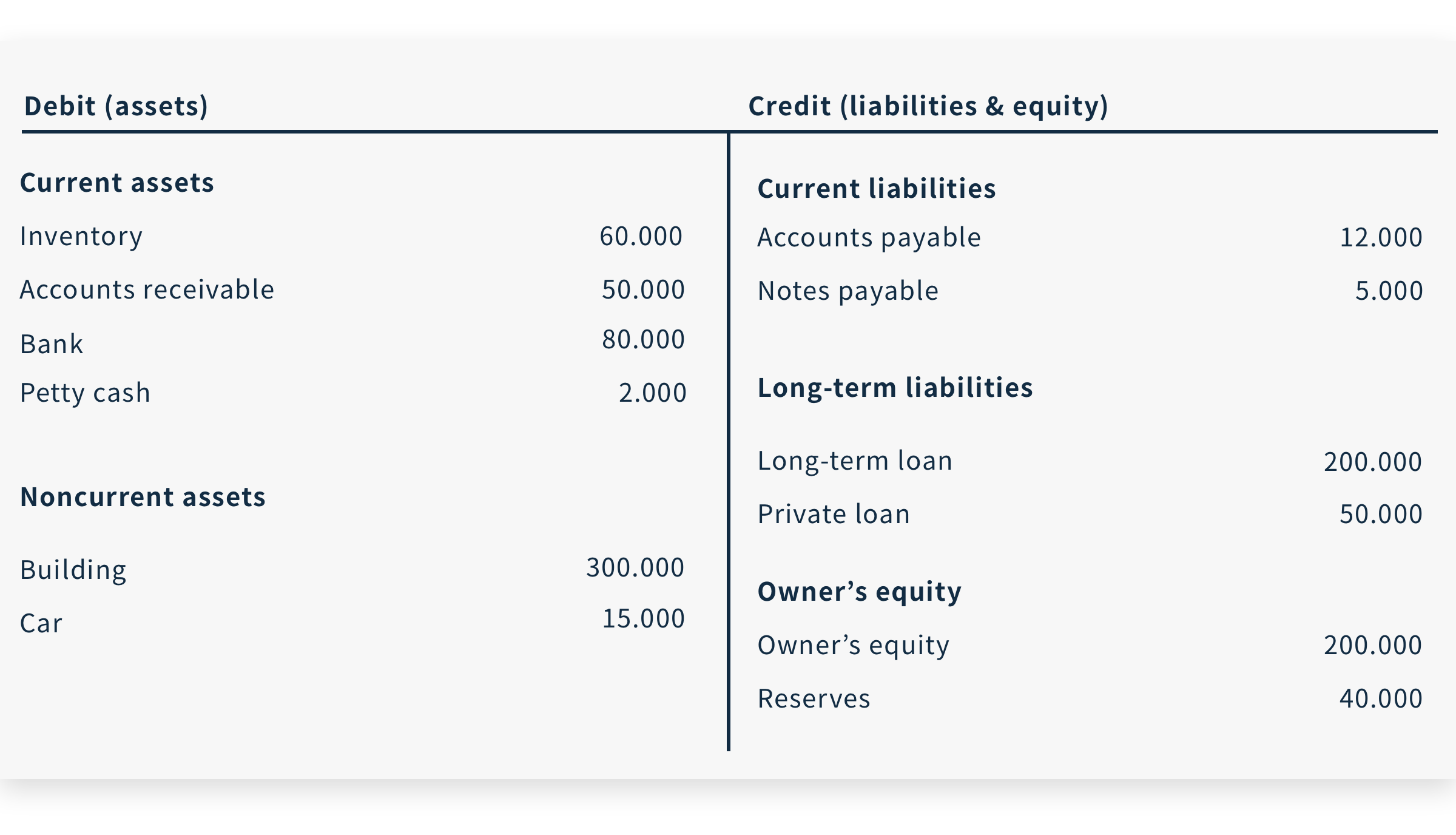What is a balance sheet?
What is a balance sheet?
In accounting terms, a balance sheet has the meaning of a statement of all assets and liabilities. The balance sheet with liabilities and assets is always balanced.
What sides does the balance sheet have?
A balance sheet, which is a statement of assets and liabilities, has two sides. The left side contains the assets and is the debit side and the right side contains the liabilities and is the credit side. This is always a snapshot and the statement provides insight into how your business is doing financially.
What is on the balance sheet?
On the left, the debit side lists all assets. These include assets such as the value of business premises or company cars as well as other investments. These are fixed assets, but there are also current assets. Some examples of assets are the stocks within a company just like outstanding receivables from debtors. The inventory in the company, business premises and the cash account are also examples of assets.
All outstanding items can therefore be found on the balance sheet. The liabilities on the right make up the credit side and this shows equity and debt, which can be divided into long and short term debt. A debt to a creditor can be seen as short term debt and a business loan as long term debt. The credit side therefore shows all financial debt obligations. Want to read more about capital? Here we explain what capital is.
Balance sheet example
It is of course useful to see a sample balance sheet to get a good understanding of the overview with assets and liabilities. Take a look below.

More insight into your finances
Creating a balance sheet is easy with accounting software and gives you plenty of insight into your finances. When keeping records, an accounting programme displays the current state of the balance sheet at the touch of a button. If you want optimum insight into your financial situation, it is advisable to link your accounting software with a smart accounts receivable system. The advantage is that this gives you even more control over the financial situation. Companies also pay much faster if you use this software.
Faster payment and time savings
Using Payt ensures that invoices are paid up to 30% faster. Credit management automation also saves up to 80% of your time spent on debtor management. It is also easy and pleasant for debtors to easily settle an outstanding invoice from your company. Should a payment still remain outstanding, you decide when to send a reminder.
Schedule an online demo
Curious about the benefits of Payt for your organisation? Schedule your personal online demo with Aziz! You will receive an interactive demonstration of our platform for accounts receivable management, without any obligations.

